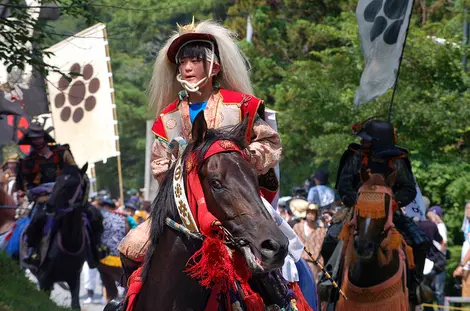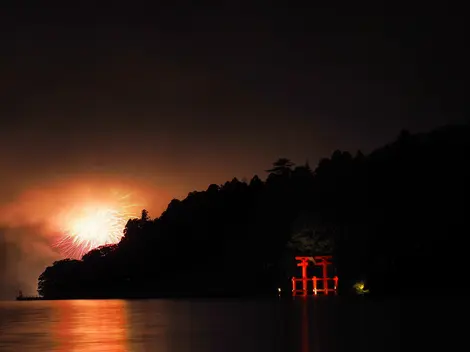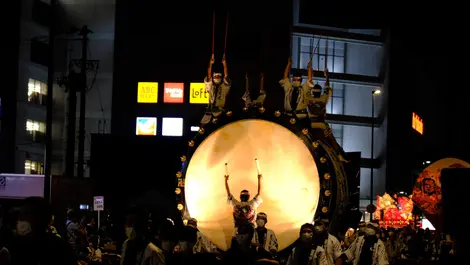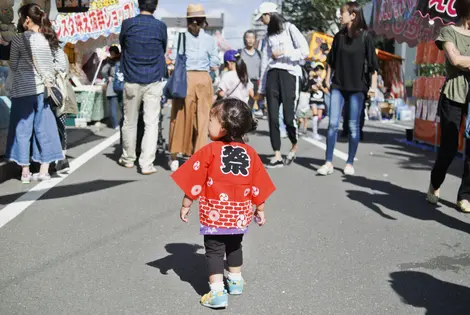Symbols of summer in Japan 日本の夏の象徴
- Published on : 07/08/2019
- by : I.D.O
- Youtube
Discover the activities and traditions that punctuate summer in Japan
One the beach with parasols, the sun, the sea…For us Westerners, this is the (stereo) typical image of summer. It's very different in Japan. But chimes that tinkle in the wind, dragonflies, goldfish, or even watermelon evoke summer in the eyes of the Japanese. It is well known that the Japanese have a craze for the seasons. Thus, clothing, interior decoration, various accessories and others each have their seasonal patterns. In summer, it is not uncommon to see yukata, summer kimonos, fans, buoys and other summer accessories adorned with illustrations symbolizing summer. What are these symbols and why?
À la recherche de l'eau et du vent
Au Japon, les étés sont particulièrement chauds, et les températures grimpent régulièrement au-dessus de 30°C. Les Japonais, pour qui la pâleur est synonyme de beauté, ont alors plutôt tendance à fuir le soleil, et tout ce qui évoque la fraîcheur est ainsi, paradoxalement, devenue symbole de l’été.
Let's get to the insects, many of which only live for one summer.
Fans of anime or Japanese films have of course all heard the incessant song of cicadas , ( semi ) punctuating the torrid days of Japan. Summer animal par excellence, its song (or rather its songs since there are about thirty kinds of cicadas in Japan) annoys or delights the Japanese population, but it is unmissable.
No Japanese summer without cicadas. It is therefore quite natural and even necessary to have them sing in films where the scenes take place in the summer.
Much more discreet but no less symbolic, the dragonfly ( tonbo ) also evokes the beautiful season. A symbol of courage and victory in samurai times, it has become now a common decoration in summer.
It can be spotted on yukata or kimonos, fans and other accessories. Living near water, it brings to mind the coolness, so much appreciated in this season.
L'été, la saison idéale pour se rassembler
Les matsuri, les festivals d'été
Pendant l'été, les matsuri, ces festivals traditionnels japonais, prennent vie dans tout le pays. Les rues s'animent de stands colorés, de danses traditionnelles et de feux d'artifice éblouissants. Ces événements festifs représentent un aspect essentiel de la culture et de la vie sociale du pays, et sont célébrés tout au long de l'année à travers tout le pays. Avec une longue histoire de traditions religieuses, les japonais s'y rassemblent dans une ambiance festive pour rendre hommage aux divinités. Chaque région, ou chaque quartier dans les grandes villes, a ses propres matsuri, souvent liés aux légendes locales.
Durant ces matsuri, l'atmosphère est animée et joyeuse. Les participants, qu'ils soient locaux ou visiteurs, se rassemblent pour célébrer en portant souvent des vêtements traditionnels tels que le yukata ou le happi. Les ruelles s'animent avec des stands de nourriture de rue où l'on peut déguster des spécialités locales, des jeux traditionnels, des spectacles de danse, de musique et parfois même des feux d'artifice éblouissants.
Les hanabi, les feux d'artifices
Les Japonais sont très friands de feux d'artifices et de spectacles pyrotechniques, qui eux aussi rythment la période estivale. Occupant une place particulière dans la culture et les festivités estivales, les hanabi attirent les foules enthousiastes à travers tout le pays.
Au Japon, ces feux d'artifices se caractérisent par leur beauté visuelle et leur synchronisation musicale. Les motifs complexes et colorés qui illuminent le ciel nocturne créent une ambiance magique et festive. Parfois accompagnés de musique traditionnelle japonaise, ils proposent ainsi une expérience encore plus immersive.
Les hanabi sont un moyen pour les Japonais de célébrer et de profiter de l'été. Ils sont considérés comme une forme d'art éphémère, soulignant l'esthétique de l'instant présent.
Les habits traditionnels d'été
Symbole même que les beaux jours sont arrivés, les habits d'été traditionnels sont appréciés pour leur style, leur légèreté et leur confort. Que ce soit pour participer à un festival, simplement profiter de la saison chaude ou encore en sortant d'un onsen, le yukata, le jinbei et le happi sont des choix populaires pour les Japonais et les visiteurs qui souhaitent embrasser l'esprit estival du pays.
Yukata
Le yukata est un kimono léger en coton porté par les hommes et les femmes pendant l'été, en particulier lors des festivals matsuri. Il est généralement composé de motifs colorés et vifs, et souvent accompagné d'une large ceinture appelée obi, qui est nouée autour de la taille.
Jinbei
Le jinbei est un ensemble décontracté de vêtements d'été porté principalement par les hommes et les enfants. Il se compose d'un haut ample et d'un short assorti, tous deux fabriqués dans un tissu léger et respirant. Le jinbei est idéal pour se détendre à la maison, faire des activités de plein air ou se rendre à la plage.
Happi
Le happi est une veste traditionnelle portée lors des festivals et des célébrations. Il est souvent orné de motifs et de symboles spécifiques, tels que des emblèmes de temples ou de groupes culturels. Les happi sont généralement en coton et sont conçus pour être portés par-dessus d'autres vêtements. Ils ajoutent une touche festive et colorée aux événements estivaux.
La touche finale et indispensable sont les uchiwa, les éventails. Symbole emblématique de l'été, les Japonais les utilisent beaucoup pour se rafraîchir par temps chaud et sont souvent décorés de motifs typiques. Les éventails peuvent également être vus dans les danses et dans les performances artistiques estivales.
- À lire aussi : Yukata et jinbei, s'habiller pour l'été
The essential watermelon ( suika ) , the summer fruit par excellence, can be found not only on the tables but also on the beach! And not only in the form of a buoy or other air mattresses. No, we see it whole, very big, and it gives rise to a summer game that we only play on the beach (or sometimes in schoolyards): suika-wari .
Literally “watermelon smashing”, the game consists of splitting a watermelon using a large stick or a baseball bat. The player is blindfolded and placed about 5-7 meters from the watermelon. He is guided by the directions, or shouts, of his friends until he reaches his goal. In general, the watermelon is placed on a mat so that we can still enjoy a few pieces at the end!
Finally, summer is the time to party and many matsuri, festivals , and hanabi, fireworks , brighten up the hot season. If they do not evoke freshness, they still symbolize this season and the bouquets of fireworks are found on many yukata that are worn on festive evenings during mild summer nights.
- Read also: Yukata and jinbei, dressing for summer
Summer must-haves
The morning glory ( Asagao ) invades schoolyards and gardens. All Japanese children have grown morning glory once in their lives! It's THE summer flower and some people grow it on trellises outside their windows for shade. No wonder we find this flower on summer fabrics.
From a culinary point of view, kakigôri , the crushed ice, is the great favorite to represent the warm season. But what symbolizes it is the sign that we see hung in front of the establishments serving this kind of refreshment. Trendy café or eatery on the beach, all display a small flag with a white background decorated with blue waves in the middle of which the ideogram for ice cream : kôri , is written in red. Small birds are also sometimes drawn there . The sight of this little flag delights gourmets and it alone symbolizes one of the joys of summer.
- Read also: Where to eat the best ice cream in Tokyo?
In search of water and wind
The majority of Japanese wishing to escape the sun, everything that evokes freshness has, paradoxically, become a symbol of summer.
Thus, the goldfish (called kingyô , " golden fish" in Japanese) which frolics happily in its jar of water, evokes freshness and makes people envious... The kingyô, which were the privilege of the rich and the noble, became accessible to people from the Edo period (1603-1868), when they began to be bred. This little colorful fish quickly became a decorative element. We see it very often printed on children's yukata , for example.
As to furin, a Japanese wind chime that is hung in summer under awnings (in traditional houses) or under windows, its light tinkling gives the Japanese a feeling of freshness and invites them to relax. More than an accessory, it is a real part of Japanese culture. The ones made of glass are often decorated with goldfish or dragonflies, also symbols of summer.
La jolie fleur de l'été
L’Asagao, c’est LA fleur de l’été. Aussi connue sous le nom de fleur de clochette, elle envahit les cours d’écoles et les jardins lorsque les beaux jours s’installent enfin. Souvent associée à la modestie, la sincérité et la beauté éphémère, cette fleur représente également la promesse d’un nouvel amour. La poétique vision de cette fleur d’été et sa jolie couleur violette, conduisent les Japonais à les laisser pousser sur leur balcon et clôtures et tous les enfants en ont d’ailleurs déjà planté.
À la fin du mois de juillet, il existe même des festivals de l'Asagoa (Asagao matsuri) qui célèbrent les fleurs et les visiteurs peuvent y admirer les différentes variétés et participer à des activités, comme dans la ville d'Iriya près de Tokyo.
Tous ces symboles de l'été au Japon reflètent à la fois les traditions anciennes et la joie de vivre estivale dans la culture japonaise. Ils contribuent à créer une atmosphère festive et vivante pendant cette saison chaleureuse !




































